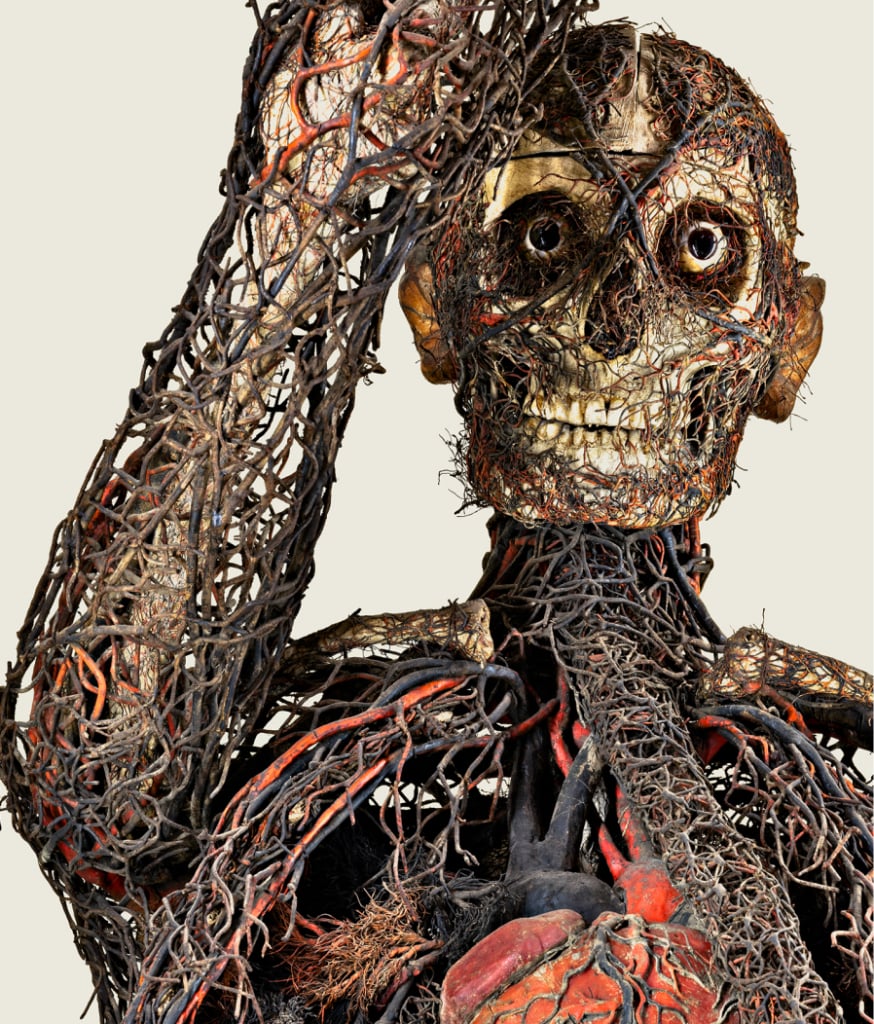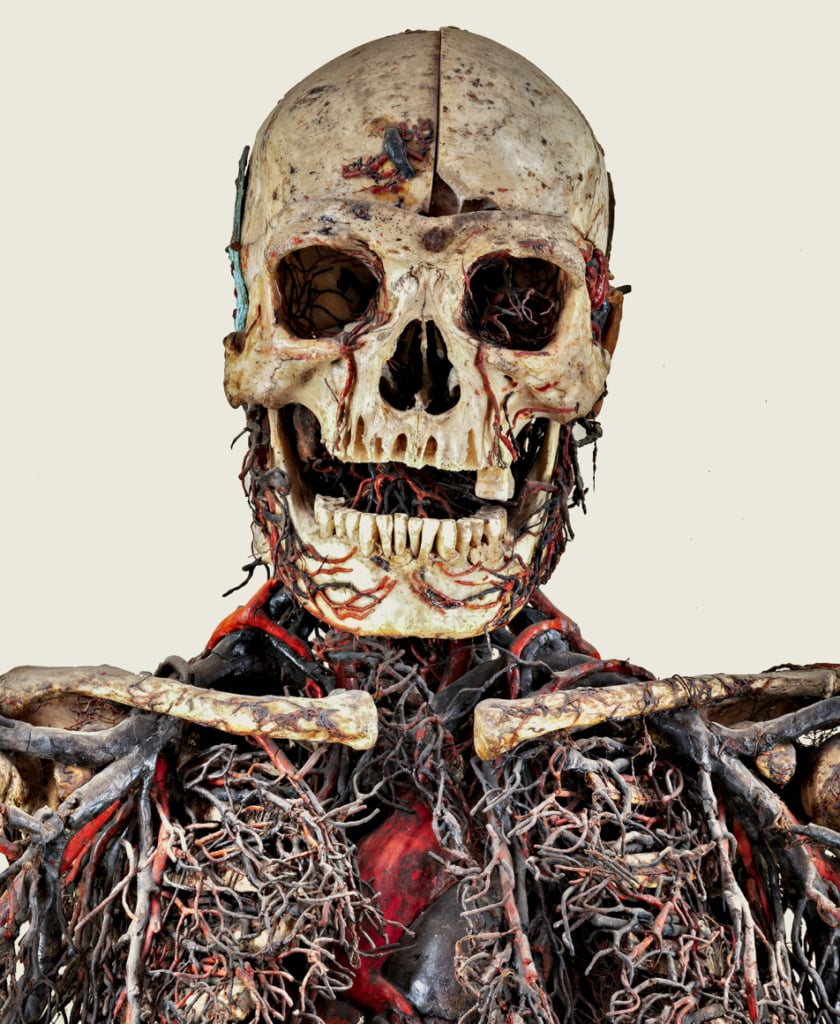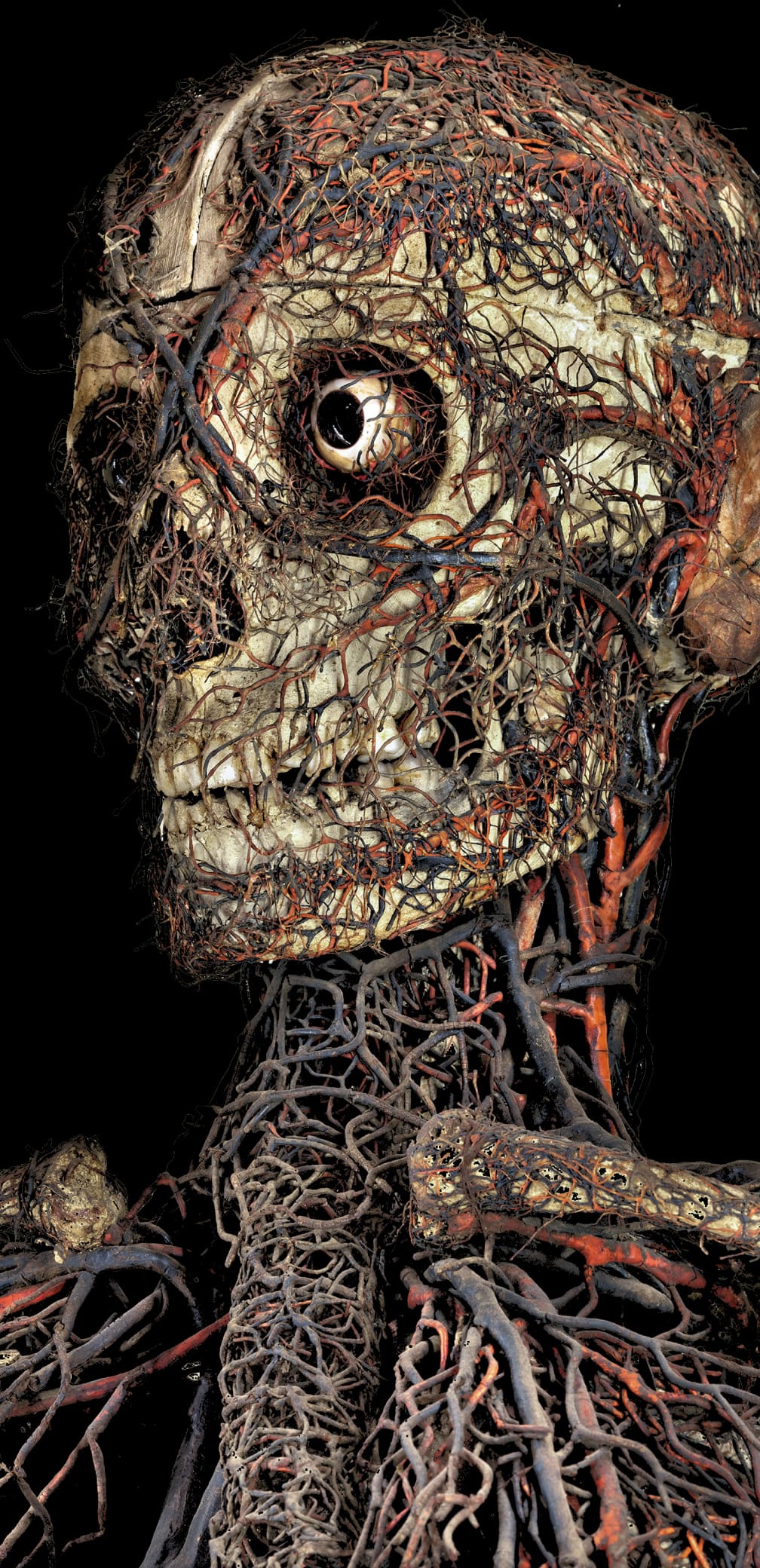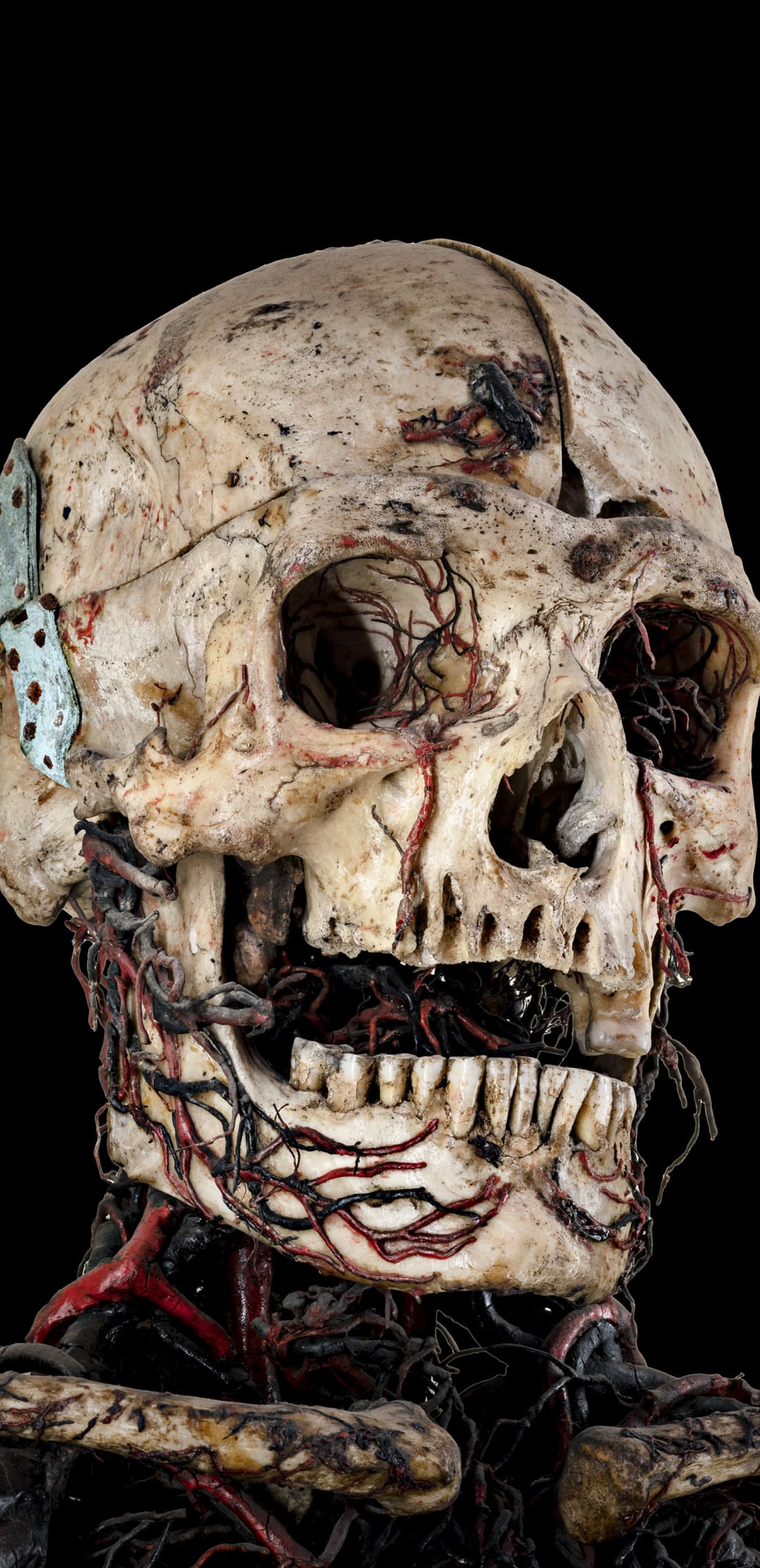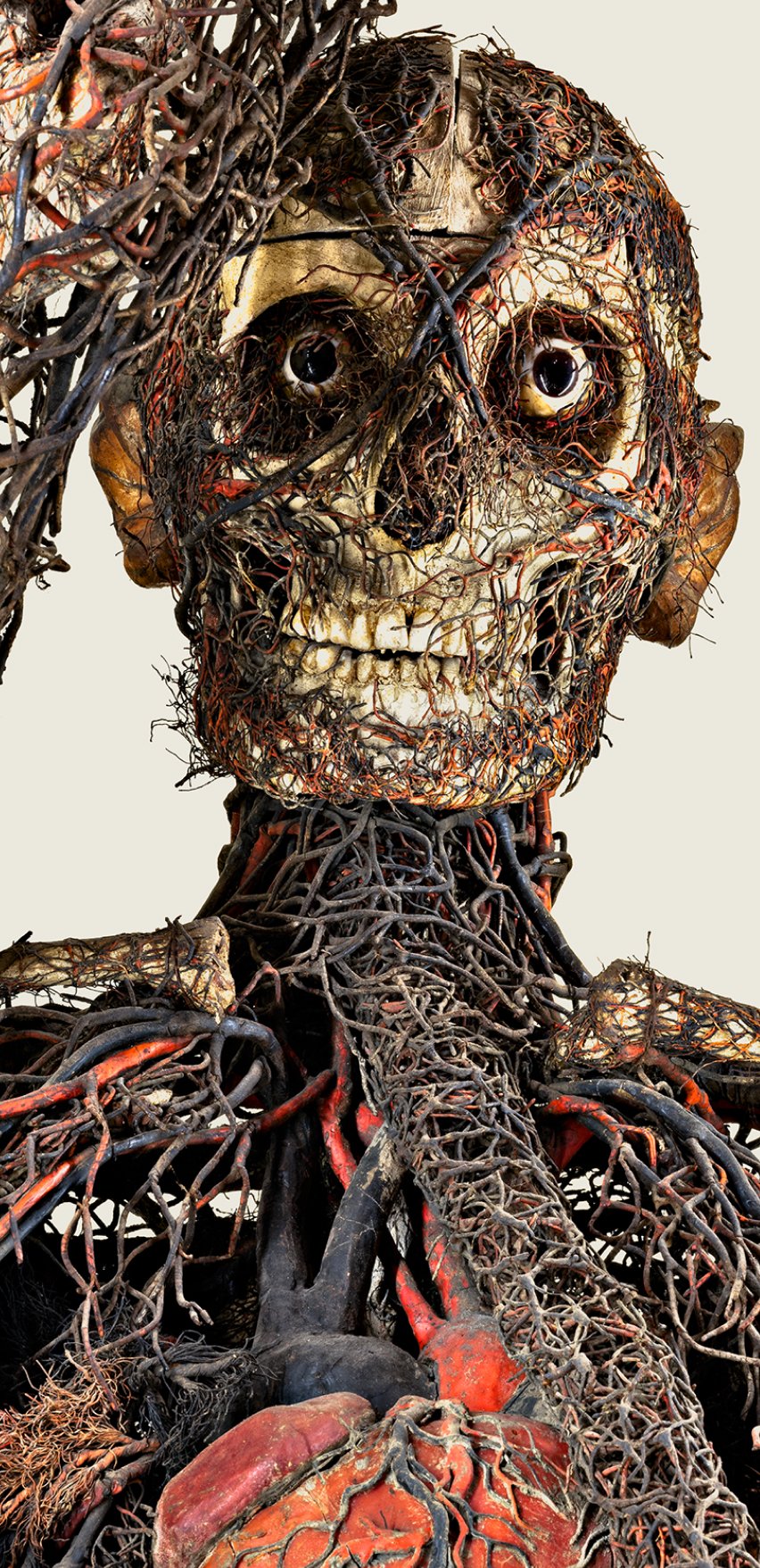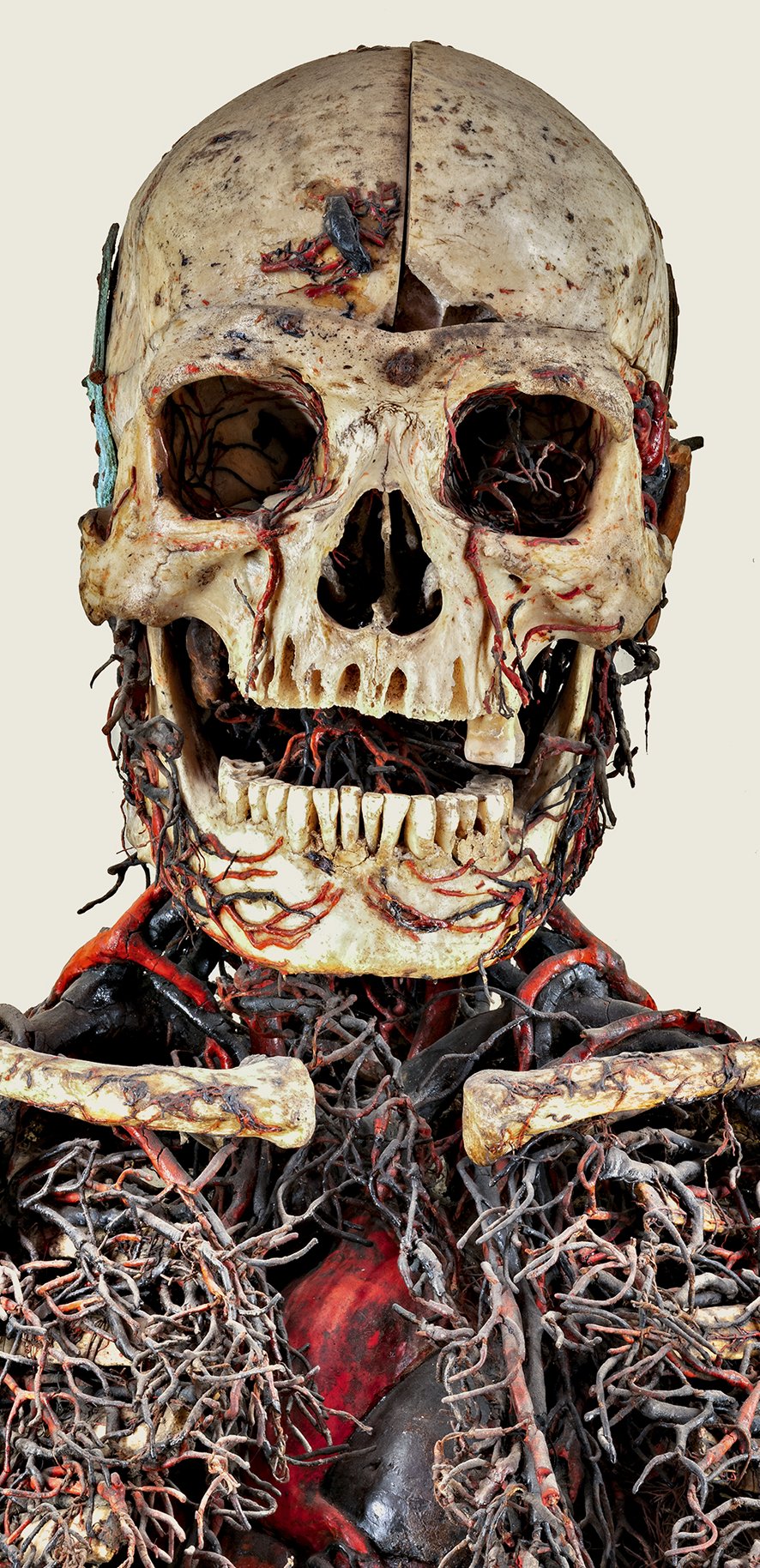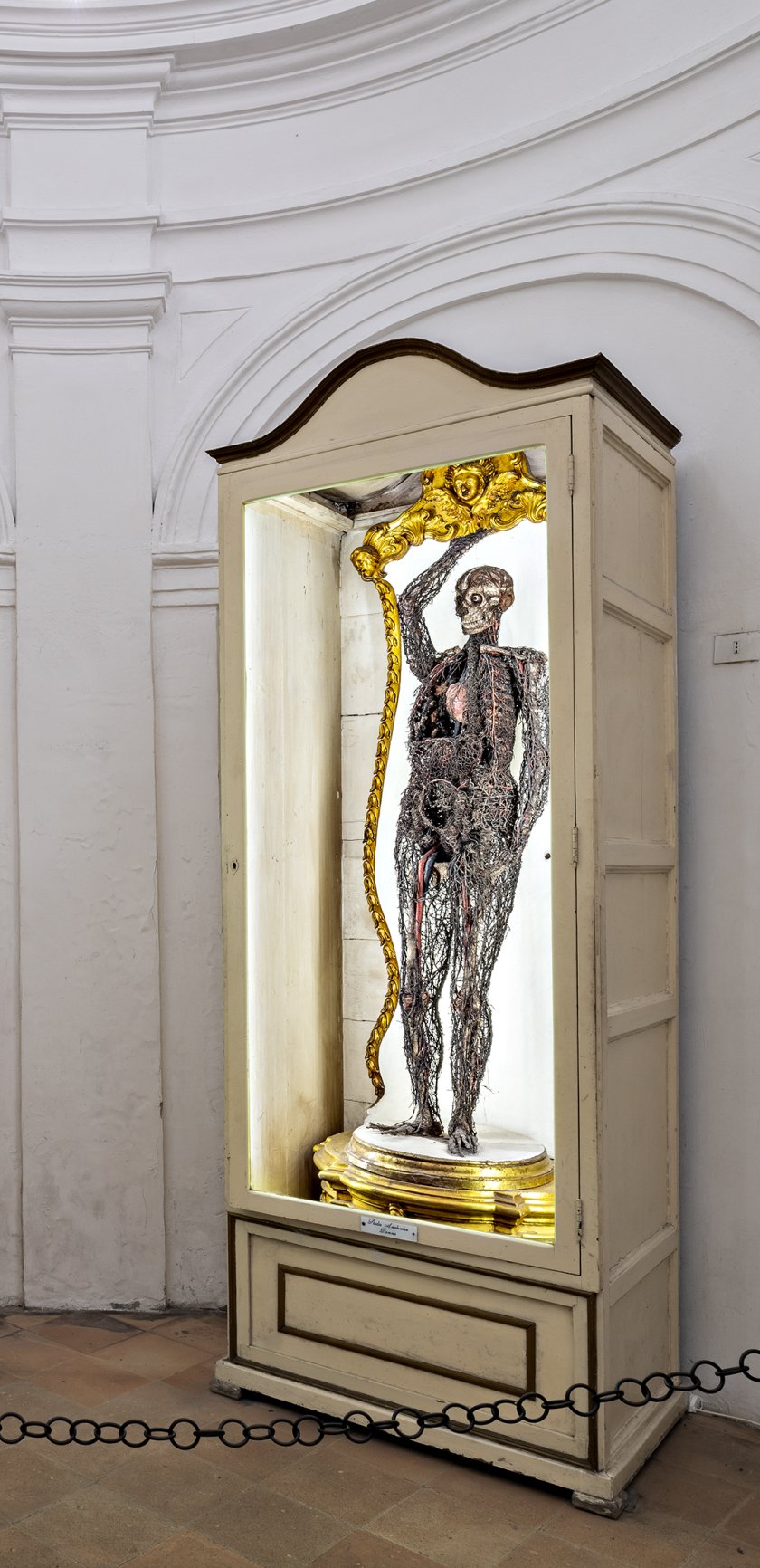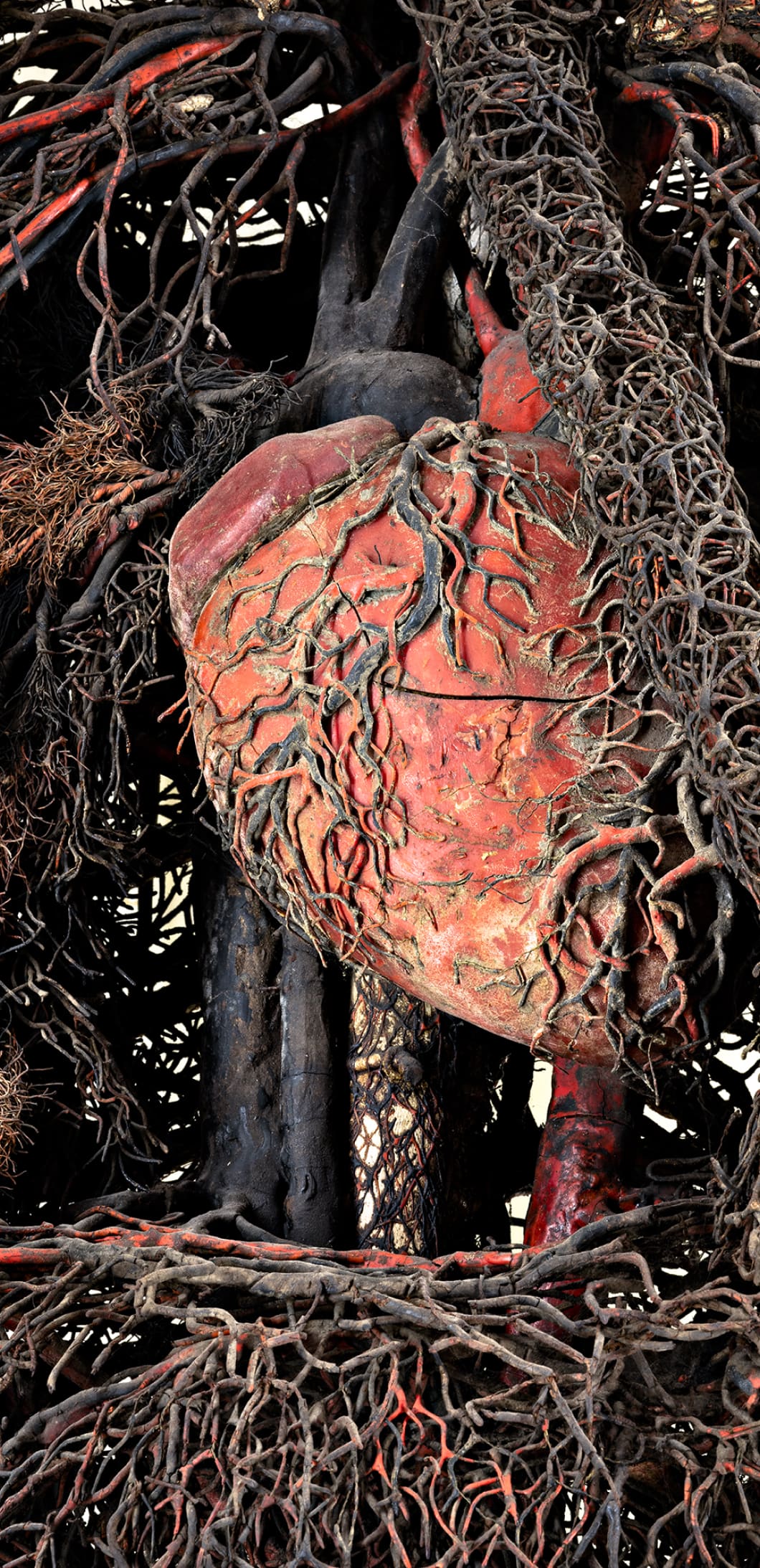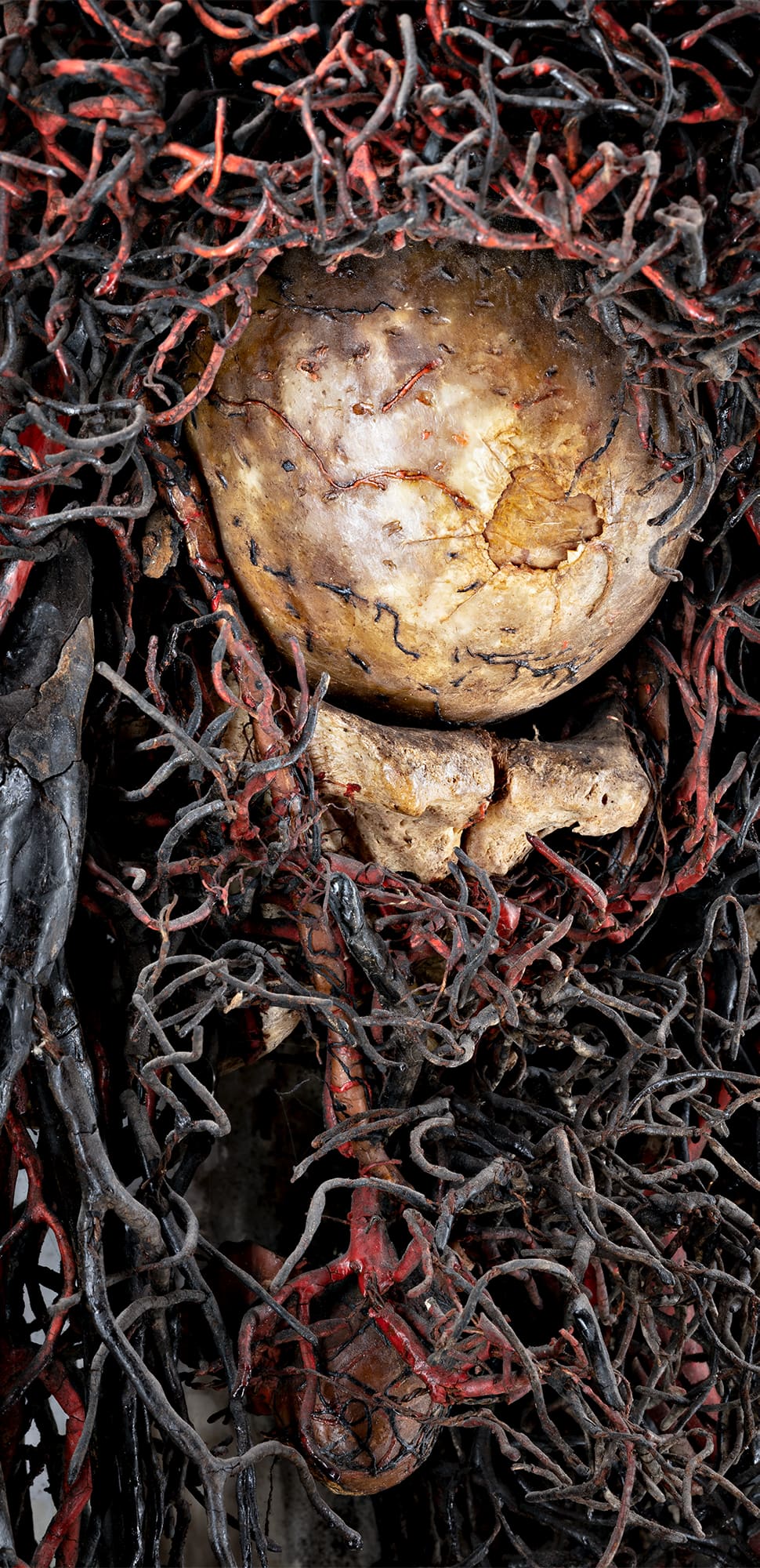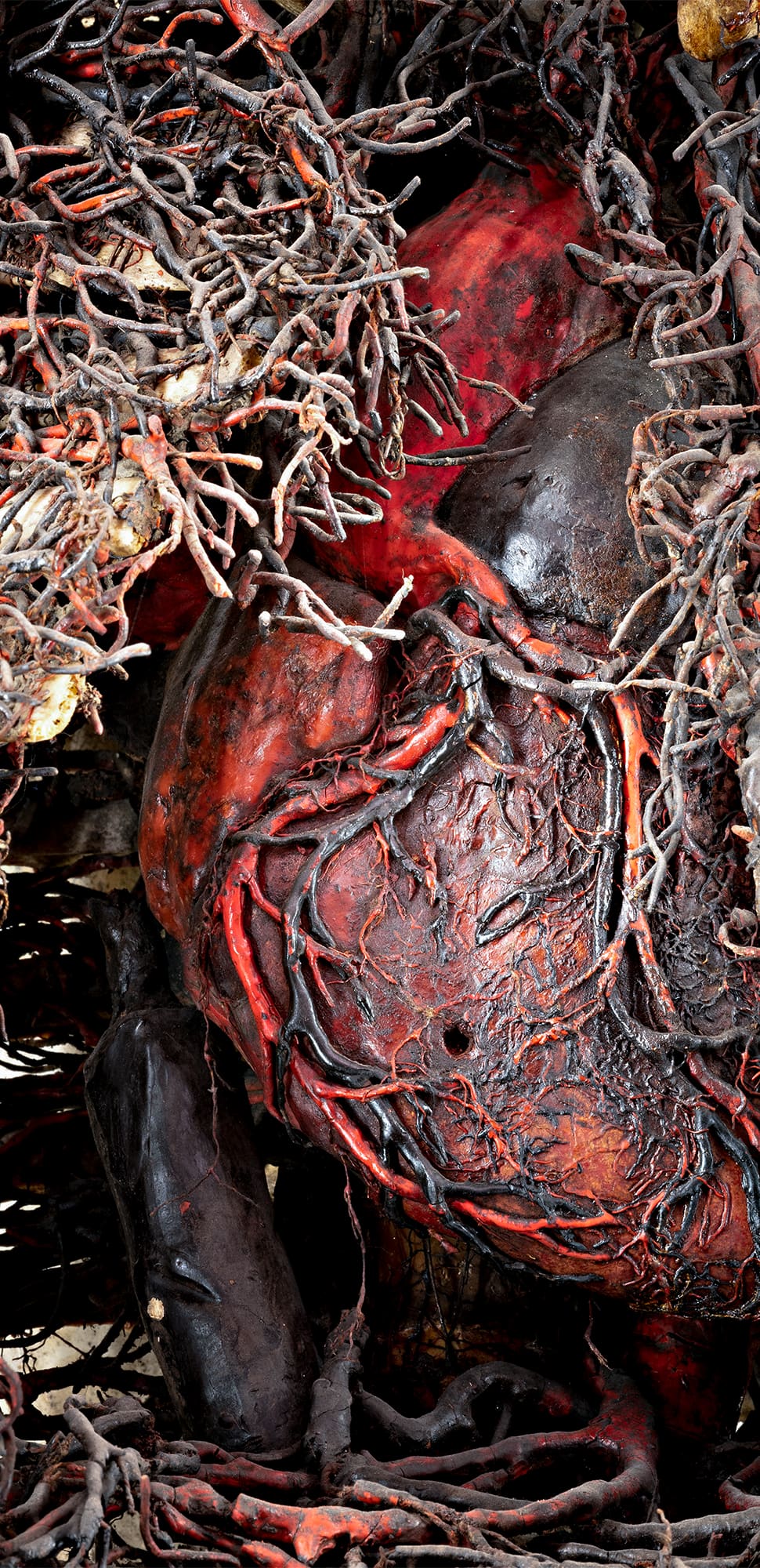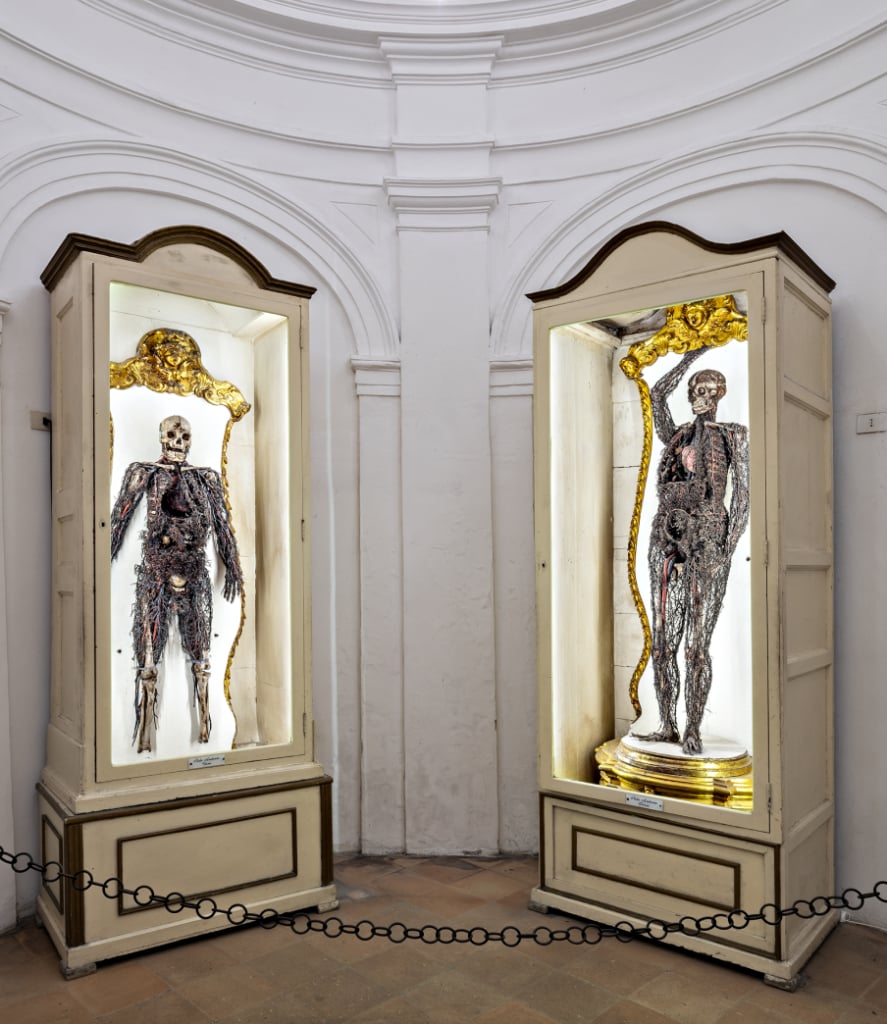
The anatomical machines
Giuseppe Salerno c. 1756-64
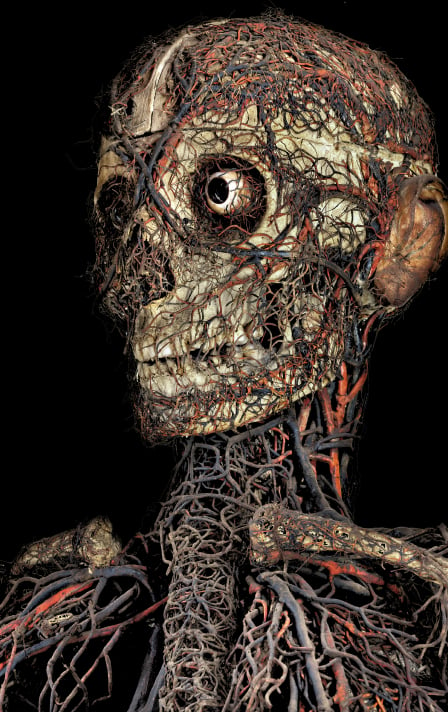
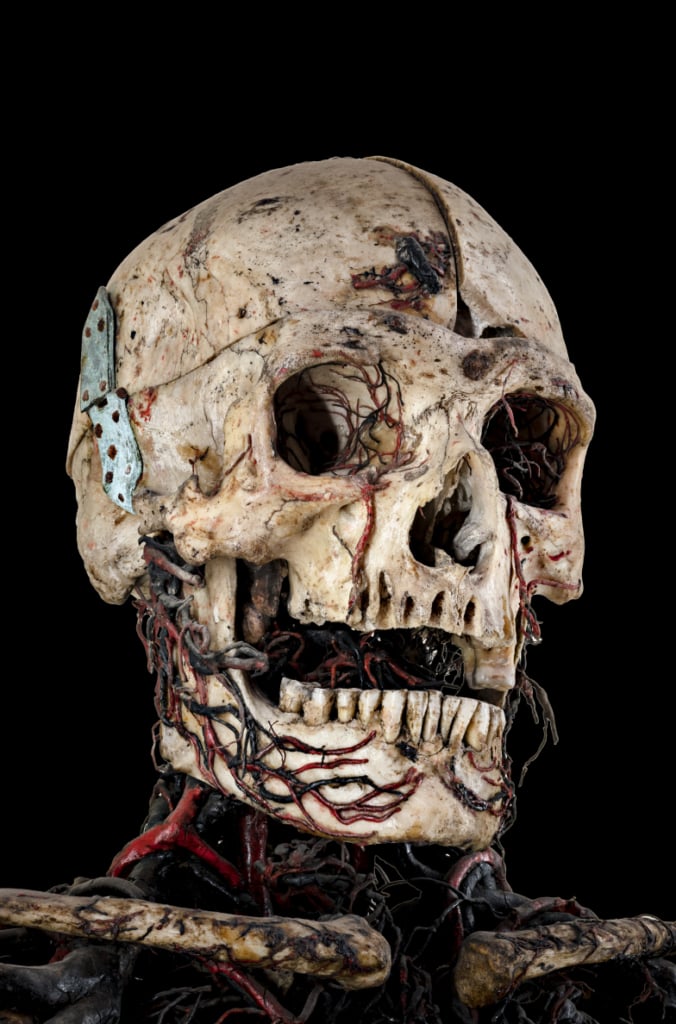
- In the Underground Chamber of the Sansevero Chapel, housed in two glass cases, are the famous Anatomical Machines, or Anatomical Studies, i.e. the skeletons of a man and a woman in upright position with their arteriovenous system almost perfectly intact. The Machines were made by Palermo doctor Giuseppe Salerno, and some recently brought to light eighteenth-century sources attest that the male anatomical machine was purchased in 1756 by Raimondo di Sangro following a public exhibition that the Sicilian pathologist held in Naples. The prince took Salerno into his employ and, granting him a substantial annual pension, commissioned him to make the other anatomical machine
The stolen foetus
These disturbing objects were kept in a room in the palace of the Prince of Sansevero called “the Apartment of the Phoenix”, as a number of travellers and the Breve nota di quel che si vede in casa del principe di Sansevero, an anonymous eighteenth-century guide to the Palace and the Sansevero Chapel, attest. This source describes the Machines in detail, from the blood vessels of the head to those of the tongue and adds that at the feet of the woman was placed “the tiny body of a foetus”, alongside which there was even the open placenta, connected to the foetus by the umbilical cord. The two anatomical studies were moved to the Chapel, and thus saved from destruction or loss, long after the death of the Prince. The remains of the foetus were still visible up to a few decades ago, when they were stolen.From truth to “dark legend”
The two Anatomical Machines are among the most enigmatic exhibits in the monumental complex. Even today, over two hundred and fifty years later, the debate continues on the procedures and materials used to obtain such excellent preservation of the circulatory apparatus. Nourishing the “dark legend” of Raimondo di Sangro, the Breve nota referred to “injection”, suggesting that, under the Prince’s direction, Salerno had injected a substance into the blood vessels of two bodies in order to cause their “metalisation”. Benedetto Croce too recounts that, according to popular belief, Raimondo di Sangro “had two of his servants killed, a man and a woman, and had the bodies strangely embalmed so that they showed all the viscera, the arteries and the veins”. In reality, the circulatory system is the result of a reconstruction carried out using different materials including beeswax and colourants. What is surprising, however, is the reproduction of the arteriovenous system down to even the finest vessels, showing such incredibly advanced anatomical knowledge for the time, that a research group have recently suggested that experiments with injections had been performed prior to reconstruction.Science and spectacle
These experiments need to be contextualised within the wide-ranging spectrum of experiments and interests of the Prince of Sansevero, who also took an interest in medicine. Furthermore, the skeleton of the woman was on a base and could be made to “turn right round so as to allow observation of all the parts”, which leads to the conclusion that Raimondo di Sangro had designed it as an object of study. It should not be forgotten, however, that he intended to – and succeeded in – amazing contemporary and future observers, and the original location of the Machines in the Apartment of the Phoenix is significant, given the association of the bird in question with the myth of resurrection and immortality.
Gallery
Map
- High altar
- The monument to Alessandro di Sangro
- Modesty
- Saint Rosalia
- The sweetness of marital yoke
- Portrait of Vincenzo di Sangro
- Religious zeal
- Monument to Giovan Francesco
di Sangro, first Prince of Sansevero - Liberality
- Monument to Paolo di Sangro,
fourth prince - Decorum
- Monument to Giovan Francesco
di Sangro, third prince - Monument to Cecco di Sangro
- Monument to Giovan Francesco
di Sangro, fifth prince - The veiled Christ
- Glory of Heaven
- Disillusion
- Saint Oderisio
- Sincerity
- The tomb of Raimondo di Sangro
- The labyrinth floor
- Self-control
- Monument to Paolo di Sangro,
sixth prince - Education
- The anatomical machines
- Madonna and child
- Portrait of Raimondo di Sangro
- Monument to Paolo di Sangro,
second prince - Divine Love

